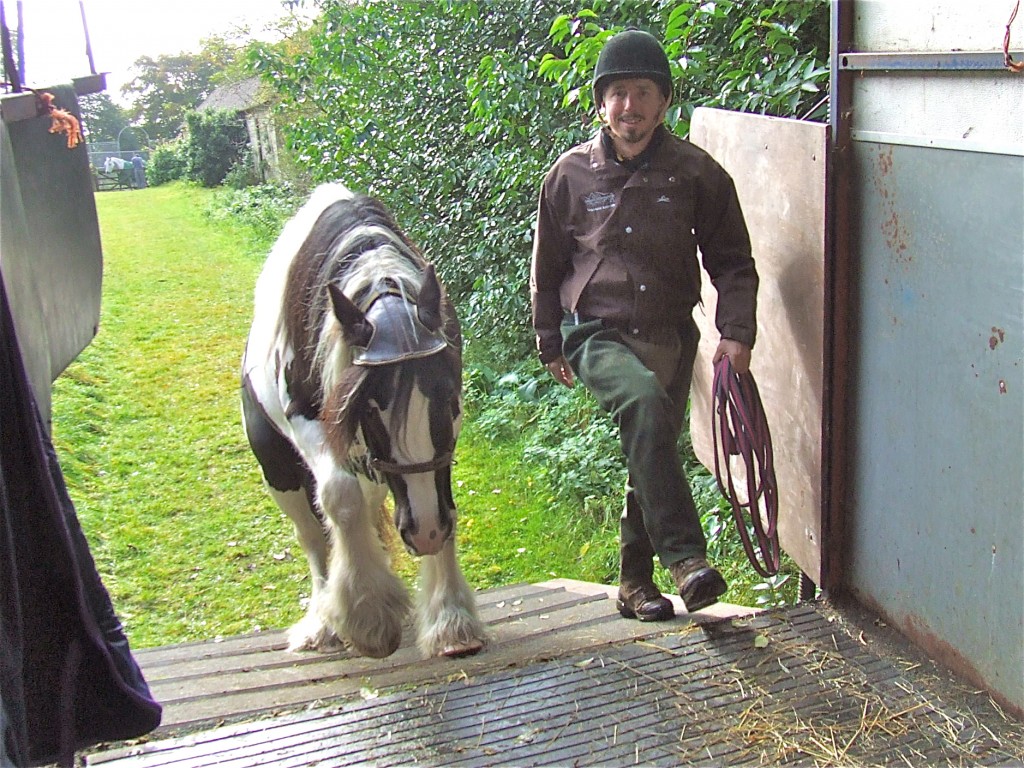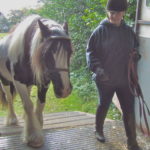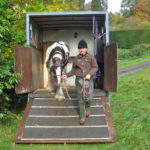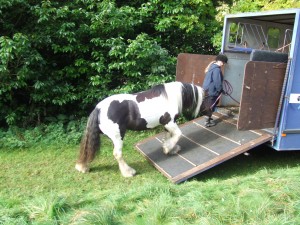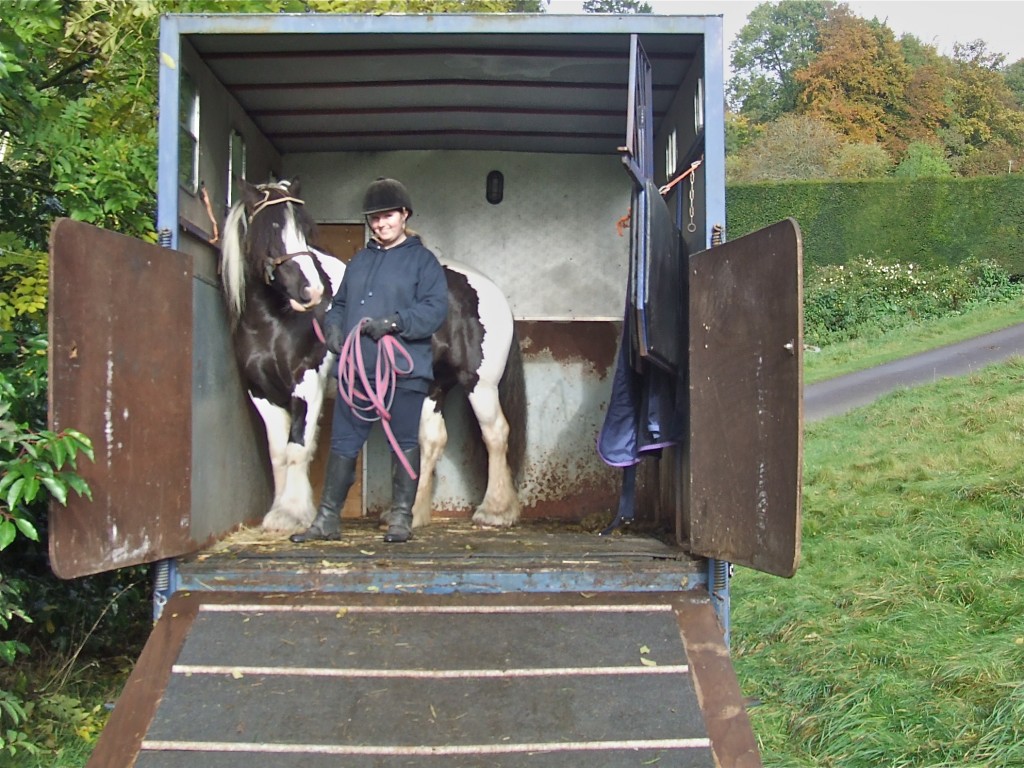Loading
Summer the Traumatised Loader case study – article
“It’s a long ride home…”
Horses that won’t load are not only frustrating for the owner, they are endangering themselves by not being easy to transport to a veterinary hospital if they are in need of surgery.
Our first horse Sensi was a bad loader and we never knew how to approach this as a training issue until we had seen Monty. We now have trained many hundreds of the worst horses to load in a relaxed and easy fashion and have never failed to improve any loader we have encountered.
This might seem like guarded language, and in a sense it is. Rather than seeing this as an entirely black-and-white, will-he-won’t-he issue, we prefer to see it on a scale from 1 to 10. Zero is a horse who’s un-loadable. Now imagine a horse who scores 10/10: a child could immediately load him into any kind of vehicle, with or without other horses, with any kind of head collar or none at all, in fact you just open his stable and he walks on! He’d walk in while the hunt went charging by! You can shut him in with partitions, or not; he’s not bothered by you closing the ramp and he travels like a dream… I don’t expect this sounds like your horse, if you’re reading this part of our web site!
You probably think of your horse as a 1/10 or perhaps even a zero. But this would be a horse who rears at the sight of a lorry, won’t step on the ramp with the front feet, and if you could get him to do that he wouldn’t with his hinds; he throws his head up and bashes the roof, get him in and he’s out like a bolt of hairy lightning- except that even Monty Roberts couldn’t get him in. The ramp and partitions closing him in terrify him, whether or not he is with his mate Dobbin; if you crammed him in he’d rear in there; open so much as the front window and he runs you over and bashes his hip as he leaps out…
Hopefully, it’s not that bad! (If it is, you definitely need some help!)
There are many ways to get this job done, from using chiffneys and other bits, rope halters, whips, plastic bags on a stick, food, other horses, and of course, dually halters and panels from round pens as Monty does. Having seen many other ways of working on this we are convinced the way Monty works is the most efficient and effective way to do it.
As we mentioned earlier, there are many issues a horse can have when it comes to loading. These can include stepping the front or back feet on the ramp, getting their head down, coping with being closed in by partitions or the ramp, and exiting, as well as travelling. In some instances when a horse has multiple issues around their loading it may be necessary to have more than one visit. On one highly unusual occasion Adam has been back to the same loader 3 times. In general one visit of around 2-4 hours (costing £45/hr plus £30/hr travel) is sufficient to put the horse and owner in a position to complete the training.

